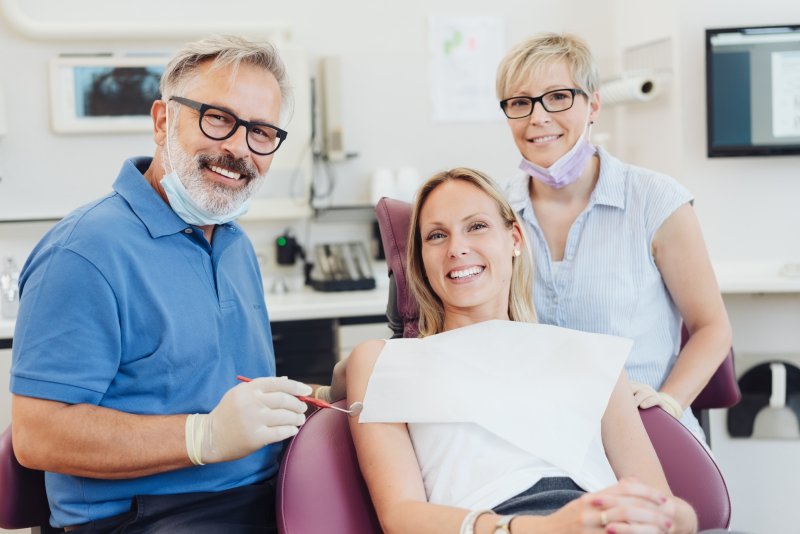
Dentists are looking for many potential issues during a routine dental exam. That includes cavities, gum disease, and any symptoms that could lead to more serious complications later. However, did you know that dentists also perform an oral cancer screening during every visit? This is because they are in a unique position to catch the signs of cancer much earlier than a general practitioner. Read on to learn what dentists are looking for and what they could find depending on how far the disease has developed.
Common Symptoms of Oral Cancer
Dentists are better equipped to catch oral cancer in its earliest stages when it’s the easiest to treat. The sooner it’s caught, the better your outcome may be when it comes time to get treated by a specialist.
With that said, you likely aren’t visiting the dentist every day to have screenings completed. That’s why it can be helpful to perform the occasional self-exam at home for oral cancer symptoms just to stay proactive, but nothing beats a comprehensive exam from a dentist. During their routine screening, they’re looking for the following signs:
- Sores on the lip or mouth that do not heal
- White or red patches of tissue in the mouth or on the lips
- Mass or growths in the mouth
- Oral bleeding
- Loose teeth
- Difficulty wearing dentures
- Pain or trouble swallowing
- Earaches that do not go away
- Jaw pain or stiffness
- Sore or raspy throat
- Tongue pain
A great way to perform a self-exam is to do it in front of a bathroom mirror (a well-lit mirror also works fine).
The Stages of Oral Cancer Explained
Like other forms of cancer, oral cancer develops in five stages. These are explained in more detail below:
- Stage 0 – Describes abnormal cells in the lining of the lips or oral cavity. Cells in this stage have the potential to become cancer.
- Stage 1 – Early stage of cancer where the tumor is no larger than two centimeters and cancerous cells have not reached the lymph nodes.
- Stage 2 – Tumors that are between two and four centimeters in size. The cancer has still yet to reach the lymph nodes.
- Stage 3 – At this point, the tumor is larger than four centimeters and has reached the lymph nodes.
- Stage 4 – Considered to be the most advanced stage of oral cancer where tumors can be any size. Oral cancer is stage 4 when it has spread to lymph nodes and nearby tissue such as the jaw or other parts of the oral cavity. It’s usually reached other areas of the body as well, such as the lungs.
In the event a dentist finds the early signs of oral cancer, they will partner you with a specialist to confirm the disease is present. From there, you can get started on a personalized treatment plan as soon as possible.
About The Center for Advanced Dentistry
Dr. Schlessel and Dr. Hornstein are trained to perform oral cancer screenings during every routine dental exam. That means you can expect a truly comprehensive oral evaluation every time you visit for a checkup. If you believe you have developed signs of oral cancer or you simply haven’t had a regular exam in a long time, they’d love to see you. To schedule an appointment, you can contact them through
